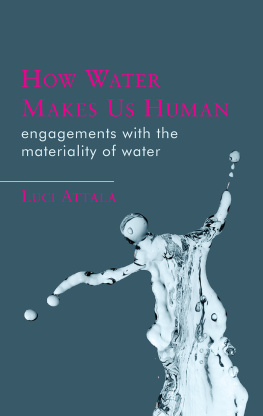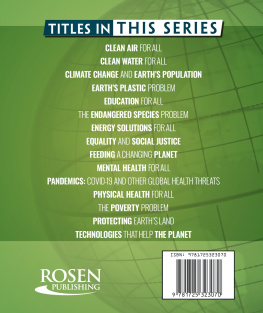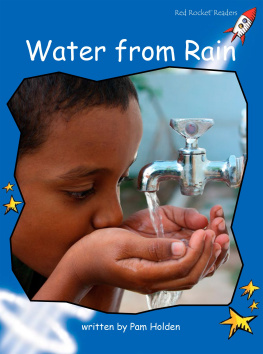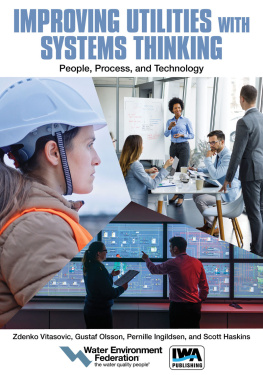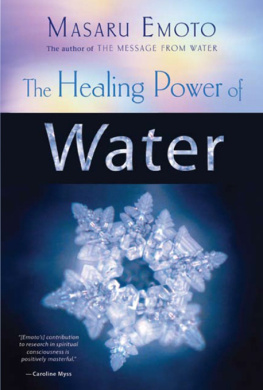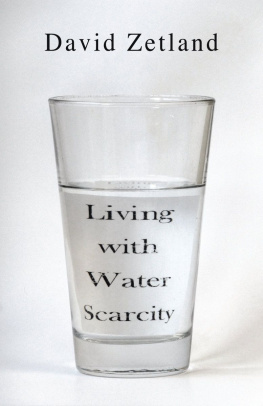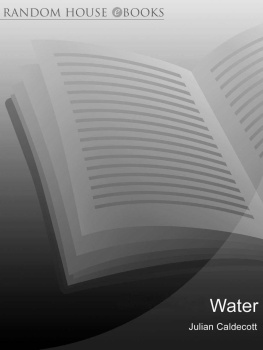CONTENTS
MATERIALITIES IN ANTHROPOLOGY AND ARCHAEOLOGY
HOW WATER
MAKES US HUMAN
MATERIALITIES IN ANTHROPOLOGY AND ARCHAEOLOGY
SERIES EDITORS
Luci Attala and Louise Steel
University of Wales Trinity Saint David
SERIES EDITORIAL BOARD
Dr Nicole Boivin
Director of the Max Planck Institute for the Science of Human History
Professor Samantha Hurn
University of Exeter
Dr Oliver Harris
University of Leicester
Professor David Howes
Concordia Centre for Interdisciplinary Studies in Society and Culture
Dr Elizabeth Rahman
University of Oxford
MATERIALITIES IN ANTHROPOLOGY AND ARCHAEOLOGY
HOW WATER
MAKES US HUMAN
ENGAGEMENTS WITH THE
MATERIALITY OF WATER
LUCI ATTALA
UNIVERSITY OF WALES PRESS
2019
Luci Attala, 2019
All rights reserved. No part of this book may be reproduced in any material form (including photocopying or storing it in any medium by electronic means and whether or not transiently or incidentally to some other use of this publication) without the written permission of the copyright owner except in accordance with the provisions of the Copyright, Designs and Patents Act 1988. Applications for the copyright owners written permission to reproduce any part of this publication should be addressed to the University of Wales Press, University Registry, King Edward VII Avenue, Cardiff CF10 3NS.
www.uwp.co.uk
British Library Cataloguing-in-Publication Data
A catalogue record for this book is available from the British Library.
ISBN 978-1-78683-411-9
eISBN 978-1-78683-413-3
The right of Luci Attala to be identified as author of this work has been asserted in accordance with sections 77 and 79 of the Copyright, Designs and Patents Act 1988.
The publisher has no responsibility for the persistence or accuracy of URLs for any external or third-party internet websites referred to in this book, and does not guarantee that any content on such websites is, or will remain, accurate or appropriate.
Cover image: Shutterstock
Cover design: Hayes Design
CONTENTS
T he Wenner Gren Foundation has supported the fieldwork for some of the research for this book under the title The Role of New Water in Shaping and Regulating Futures in Rural Kenya .
I would like to thank: Sam Hurn, Louise Steel, Janet Burton and Ros Coard for listening to me bleat on about water for all these years; my students (particularly Kenny Lewis) for their bold and cheeky insights; Jane Cartwright, Steve Thomas and family, Rosemary Northover, Erin Kavanagh and Martin Bates for their help with the Welsh chapter; Tim Ihssen, who, after editing this, describes himself as an ugly bag of mostly water; Sarah Lewis of University of Wales Press for this opportunity; my beautiful children, Kizzy, Minna, Llyr and Al, for being hilarious in so many ways, and for being the loves of my life and my absolute best friends; the ever-emerging grandchildren, who joyously demonstrate how materiality reshapes itself; Gary the cat, for waking me up before 6 a.m. because he was hungry and had to be fed immediately ; the community in Kenya (particularly Alex and Loice Katana, and Musa Mare), who put up with my nonsense; and last but not least water, because, without you, we are dust.
T his book is one of a series that contributes to what is broadly termed the new material turn in the social sciences. The underpinning intention that coheres the numerous interdisciplinary moves that participate and feed into this flourishing body of literature is to challenge anthropocentricism. This series dethrones the human by drawing in materials. Positioned under the broad umbrella heading of the New Materialisms or New Materialities, the series aims to draw in the non-human as agent, with a view to both recognizing and advocating for the other-than-human entities that prevail and engage in our lives.
In recognition that these terms are somewhat slippery to grasp, we have outlined the following distinctions so as to put clear water between the terms and to demonstrate how we are using them.
Distinctions between materiality and matter
The term materiality describes the quality or character of the material of which a thing is made what we might call its material-ness. On the other hand, the term matter is used to describe physical items that occupy space (mass). Traditional theories of materiality explore how objects (made of matter (different materials)) shape the lives of people. New Materialities examines the materials (matter) of which objects are made and how those materials influence human behaviour.
Materiality and material culture studies have tended to focus their attention on things or objects , especially the things that people make. Scholarship has been less concerned with how materials behave, in favour of looking at how people use materials. Materiality studies, therefore, demonstrate a connection between humanity and the things that they make and use. In other words, it explores how items reflect their makers and owners, and therefore embody meanings.
The New Materialities turn moves away from objects and examines the materials from which objects are fashioned. Turning attention to the materials allows a new dimension to open up whereby the substance from which a thing is made becomes significant. Bringing materials to the foreground not only shows that materials are instrumental in providing the character and meaning of an item but also that the materials themselves determine or are even actively responsible for the final shape and manner by which the finished article can manifest. Thus, how a material behaves predicates how it can be used and, in turn, how we understand it. This perspective gives materials a type of agency both inherently and while in relationship with other materials. Indeed, using this perspective, it is how materials interact or engage that becomes the place of relationship, creativity and attention. Therefore, the NM draws into focus the materials of which things are made and, by focusing on the behaviours and characteristics of those substances, asks the question How do the materials (for which read substances) from which we make things shape our lives?
This book is about how water becomes people or, put another way, how people and water flow together and shape each other. While the focus of the book is on the relationships held between water and people, it also has a broader message about human relationships with the environment generally one that illustrates not only that people are existentially entangled with the material world, but also that the materials of the world shape, determine and enable humans to be humans in the ways that they are. Therefore, this book is first and foremost about relationships. It focuses specifically on water and, in doing so, draws attention to the liquid gossamer filaments that run through and physically join bodies and other matters, thereby fore-grounding the part that water plays in shaping human lives. Through the adoption of what is broadly termed a New Materialities (hereafter NM) perspective (following: Bennett 2010; Coole and Frost 2010; Drazin and Kchler 2015) the inextricable links between the worlds of materials that people (as bodies) are part of are demonstrated.
An NM perspective is an inclusive approach to seeing the world (an ontology) that looks at how materials behave together so as to consider life from the perspective of material interactions. It intends to look past the boundaries that seemingly contain entities, to focus instead on how entities influence each other through their materiality. As with other approaches, an inclusive approach recognizes that all situations are complex, contingent, contextual and consist of multiple impacting influences (Urry 2005). However, by using an NM perspective, such complexities are seen to occur within the restrictions of being physical, rather than on other scales (for example, political or economic). It shies away from suggesting that just one aspect, method or manner has precedence over another, and in so doing it supports a move towards the appreciation of the co-generative aspects of relationships (or being together) to explore how relationships produce variable outcomes depending on the physics of all of the engaging materials. In short, inclusivity includes and, by including or relating to how more-than-the-human makes the human what it is , the NM approach avoids human exclusivity and discrimination against other aspects of the material world. In consequence, an NM perspective relates specifically to relationships (and almost their molecularity) rather than noting how singular items or individuals behave that is: it explores (or brings to the light for inspection) the ways in which things relate to each other. Thus, it holds that it is the relationship (the manner by which things can relate) rather than the things per se (or exclusively) that is of interest.

